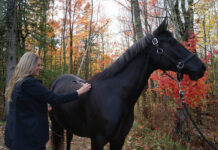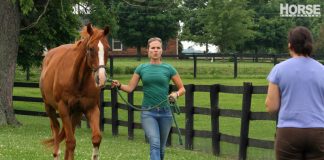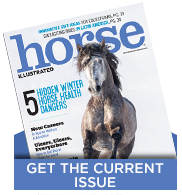You may have wondered if you can take the edge off an anxious horse or add pep to a lazy mount by changing his feed. Can a horse’s temperament really be affected by a specific nutrition regiment?
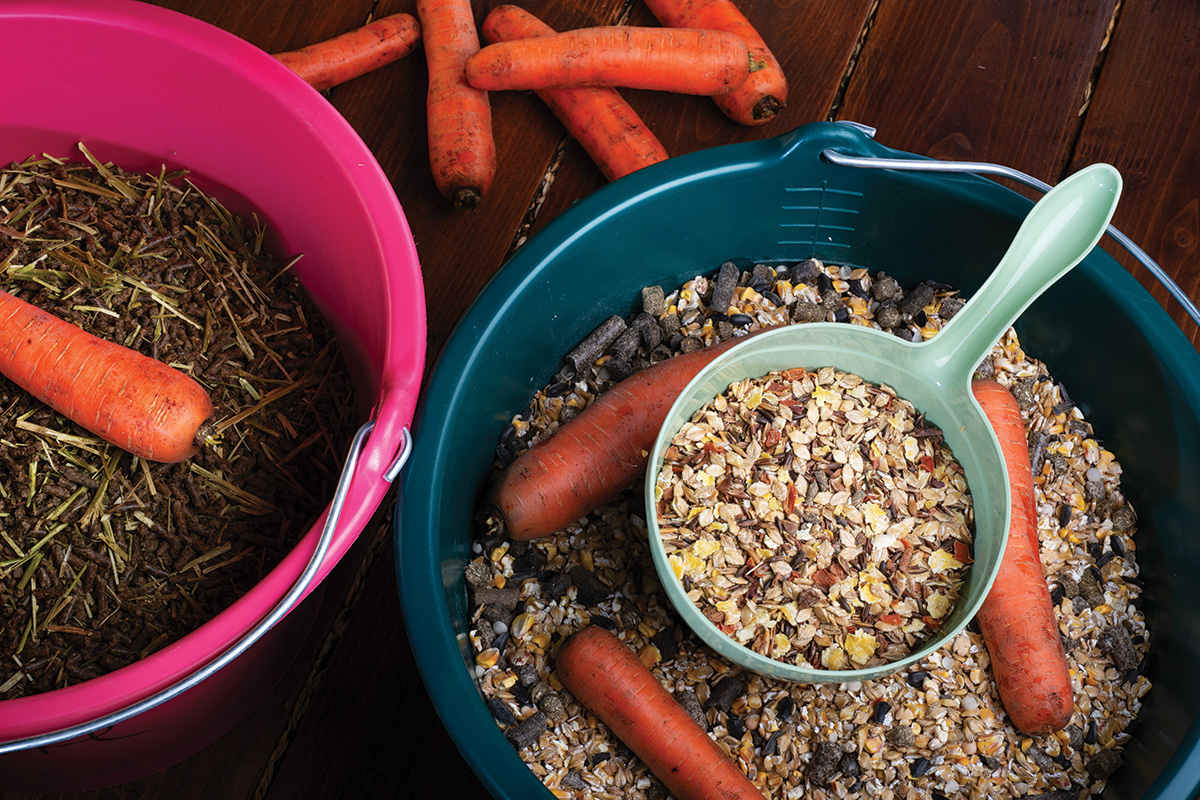
“It depends somewhat on the individual horse whether you can influence his temperament with diet, but there is evidence that for many horses, what they are eating can influence whether they are reactive, flighty or calmer,” says Kathleen Crandell, Ph.D., an equine nutritionist who works with Kentucky Equine Research (KER).
She explains that calories are just a measure of the amount of energy in feed. Different feed sources can supply the same number of calories from different sources of energy.
“It all comes down to how the energy source is metabolized within the body as to what kind of energy it will supply,” says Crandell.
For example, fat and fiber are considered “cool” energy sources, while starch and sugar tend to be “hot” energy sources.
The Protein Myth
While you may have heard that high-protein feeds make horses more excitable or “hot,” that’s simply not the case.
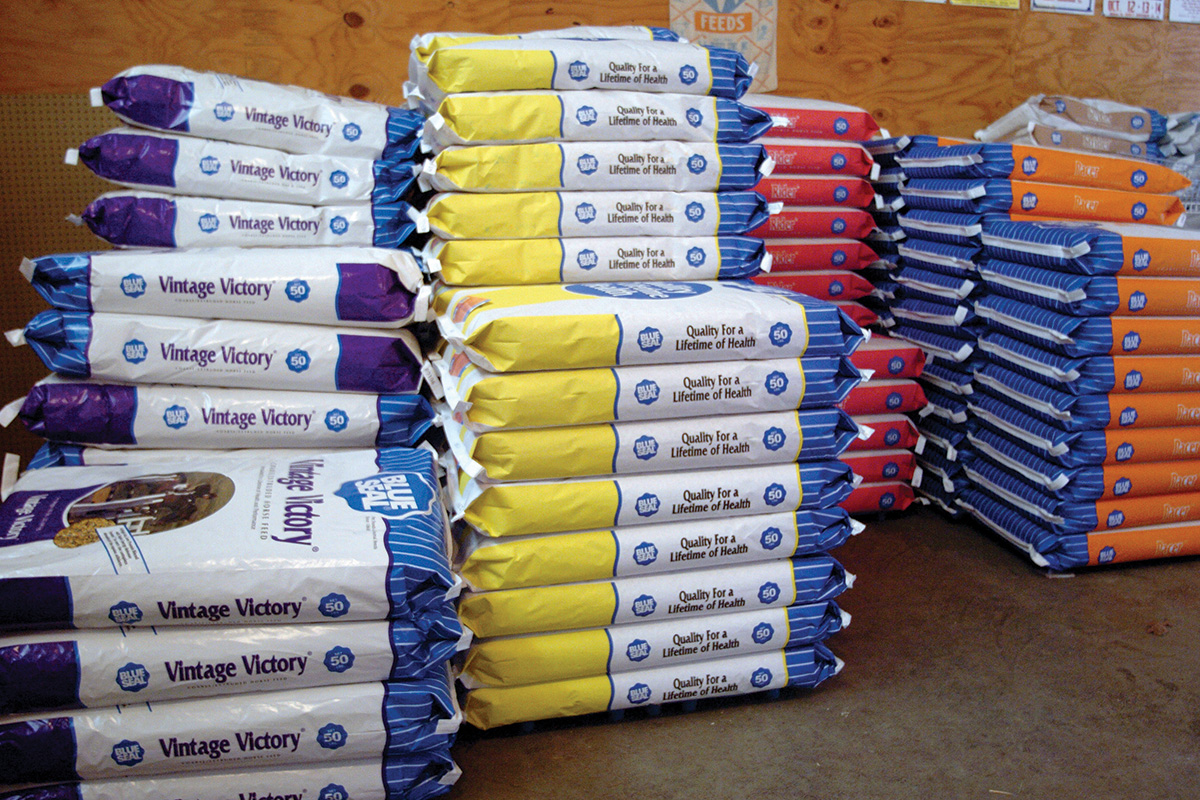
“The old belief was that protein dictated the amount of energy in a feed,” says Crandell. “Horse owners would look at only the protein percentage to determine if the feed had enough energy for the horse. We now know that is not the case, and protein percentage is merely an indicator of protein, not energy.”
She explains that the amount of starch and sugar is typically what contributes to the amount of energy the horse can get out of a feed, along with the digestible fiber and fat.
Crandell points out that energy sources in the equine diet are fiber, fat, and non-structural carbohydrates (NSC), which is the combination of starch and sugar.
“Horses get their energy from the feed by the digestion of carbohydrates, both structural carbohydrates (fiber) and non-structural carbohydrates, which are starches and sugars,” she explains.
If a horse needs more energy than he gets from fiber alone to maintain his weight or do his job, you can feed more concentrated energy sources, which are found in non-structural carbohydrates and fat.
This is why work horses in the past were traditionally fed significant amounts of oats or corn. They simply couldn’t eat enough fiber (hay or grass) to supply the caloric energy needed for their workload.
Starch and Sugar
Feed with a high percentage of starch and sugar can make some horses more excitable. That’s why changing feed may help “chill out” a high-energy horse.
Research studies and anecdotal evidence both show that the amount of starch and sugar in the diet influences excitability.
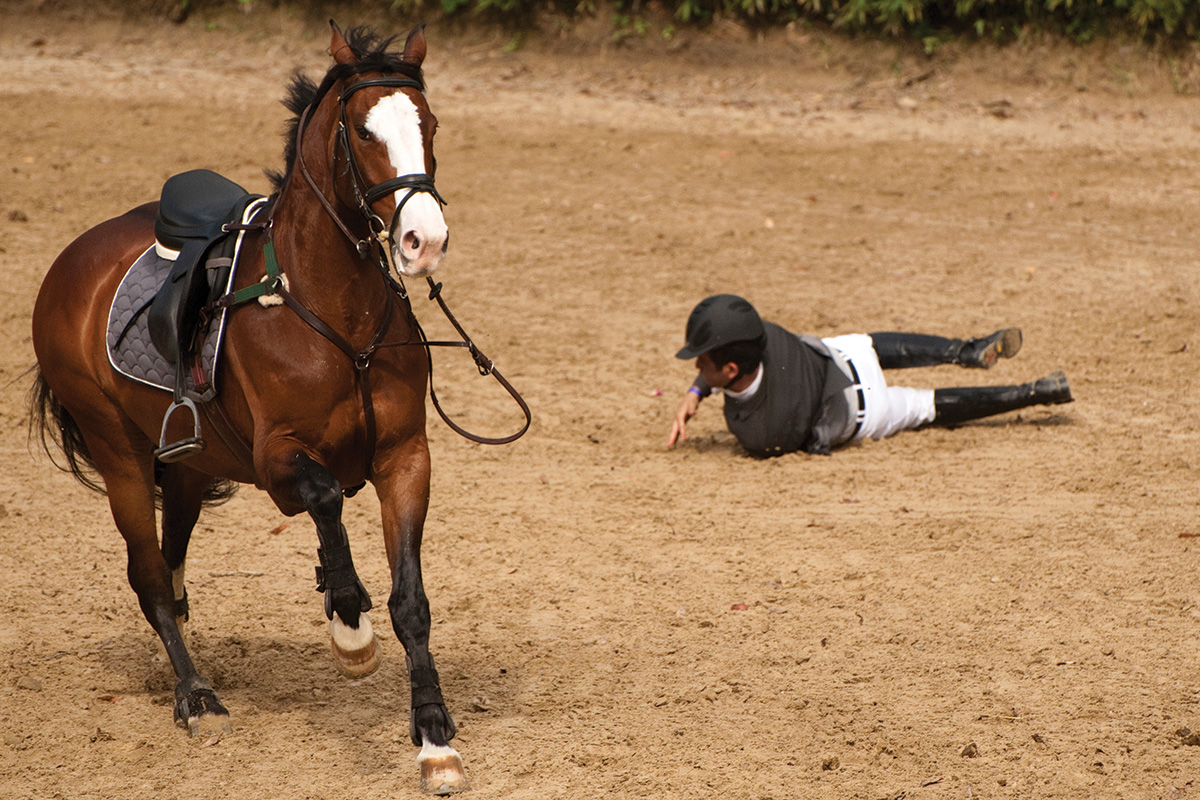
Crandell says the original research compared a high-starch diet to a high-fat diet. Horses were less excitable and reactive when fed the high-fat diet.
“More recently, there was a research study where horses were fed a high fat-and-fiber feed versus a high-starch feed,” she says. “The horses on the high fat-and-fiber feed were, once again, less reactive to stimuli.”
Corn tops the high-starch list at 70 percent, followed by barley at 54 percent. Oats are considered “moderate” starch at around 43 percent—plus they contain more fiber than corn or barley. All three are higher in starch than wheat middlings, soybean or oat hulls, and beet pulp.
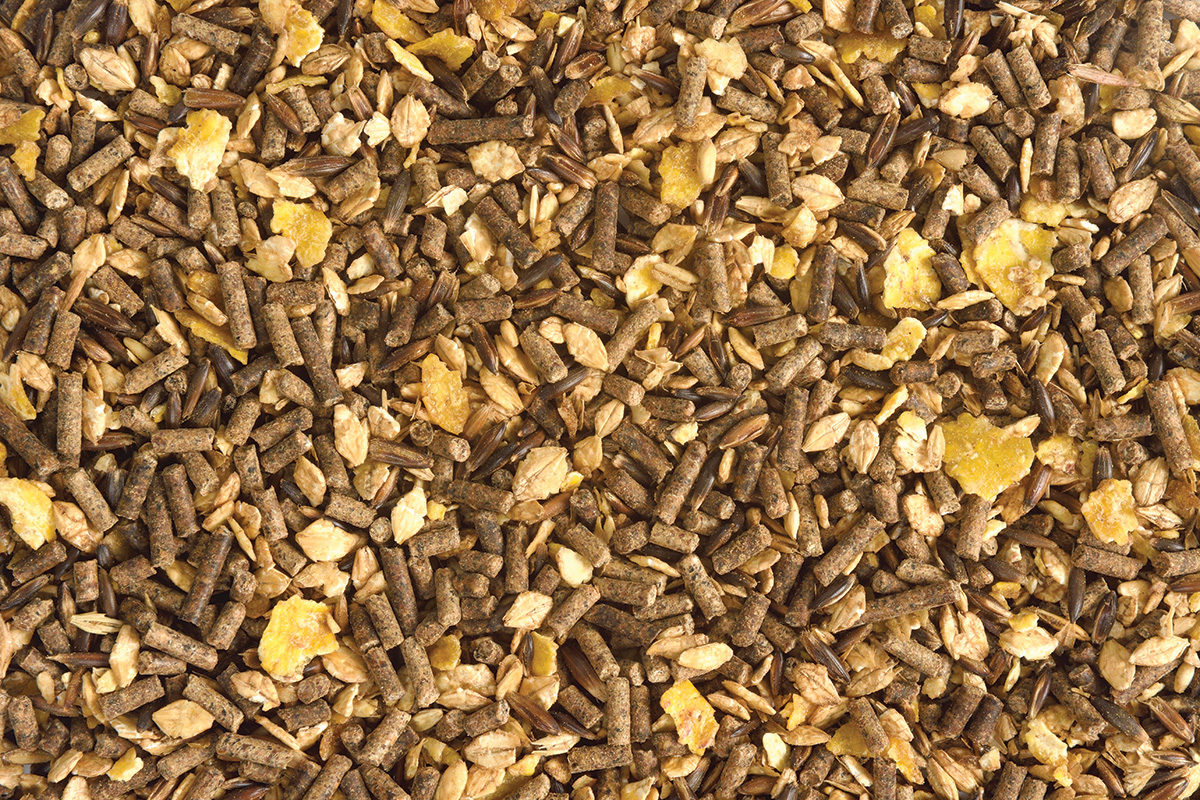
In low-starch horse feeds, ingredients like wheat middlings, soybean or oat hulls, and beet pulp are commonly used to substitute fiber calories for the starch calories normally supplied by grains.
You can assume that sweet feed is fairly high in both sugar and starch because of the grain and molasses content.
But what about textured feed?
“Back in the late 1990s, a new generation of textured feed appeared in the horse industry,” says Crandell. “It was made basically with beet pulp, high-fiber ingredients like soy hulls, oil, and vitamin/mineral pellets, with a smaller amount of molasses. These are technically ‘textured feeds,’ but they are high in fiber and fat and low in starch and sugar. This type of feed has become more common than sweet feeds through the years because horse owners are looking for lower-starch options to feed their horses.”
“Cool” Energy
Think about the sugar overload kids get at a birthday party after eating lots of sweet snacks.
Crandell says the same concept applies to horses, as the digestion of both sugars and starches in feed may be responsible for excess energy. It is the digestion of soluble carbohydrates that causes rises in blood glucose and insulin, which are thought to have the effect on temperament.
Energy from fiber and fat is generally described as “cool” energy because during the digestion of those energy sources, there are no significant changes to blood glucose and insulin.
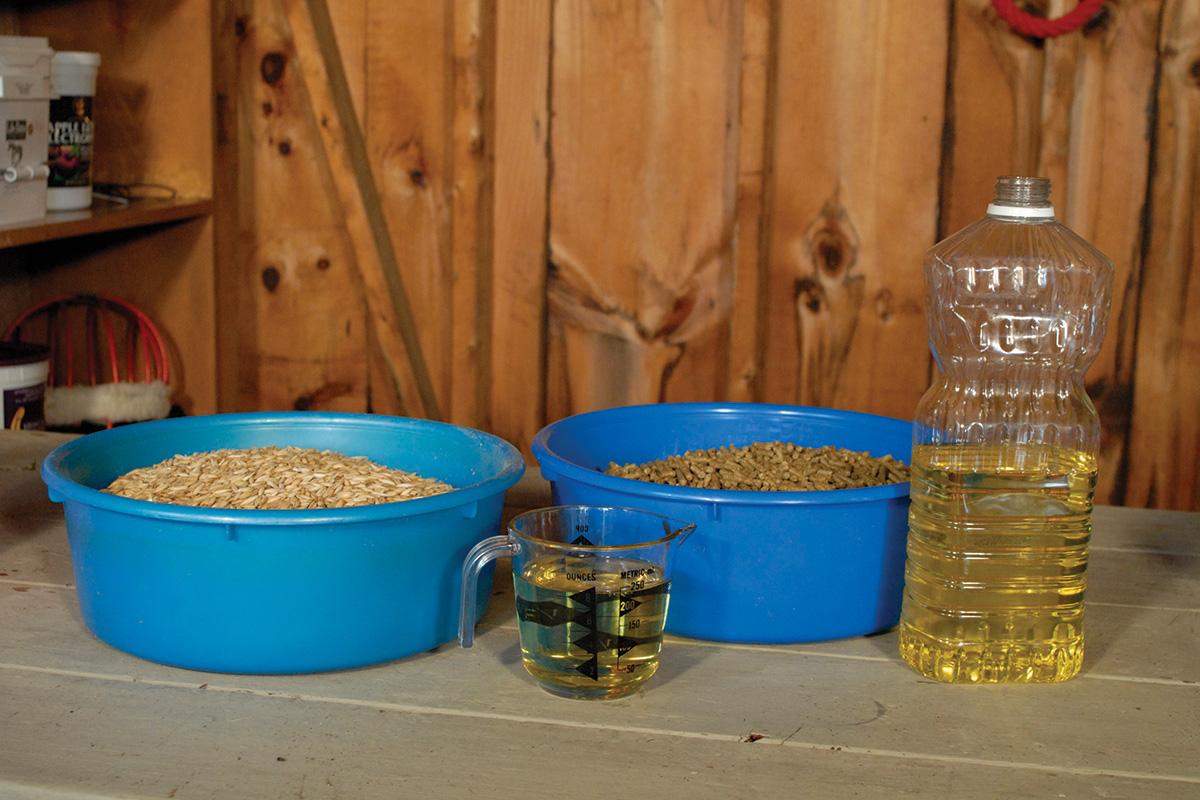
This is why if your horse tends to be anxious or easily excitable, it may help to feed him a diet low in starch and sugar, but high in fiber and fat.
Crandell saw this firsthand in a research study at KER. Study horses were fed either a high-starch or high-fiber feed for 21 days. All horses eventually were on each of the diets over the course of the study.
“When one of the horses was on the high-starch diet, he became very nervous and hard to handle, yet when he was fed the high-fiber feed, he was as gentle as a lamb,” she says. “It is no guarantee that a horse may be calmer on a low-starch feed, but it’s certainly worth a try.”
Because fat is a concentrated source of calories, it supplies energy without adding bulk to the diet.
“If a horse is not maintaining weight or needs to gain weight, high-fat feeds are ideal for getting the maximum calories into him in the least amount of feed,” notes Crandell.
A high-fat feed or supplement can also help a horse in hard work that needs more calories.
Adding Energy
While there’s a lot of focus on making horses calmer, some owners may wonder how to make a laid-back horse more energetic.
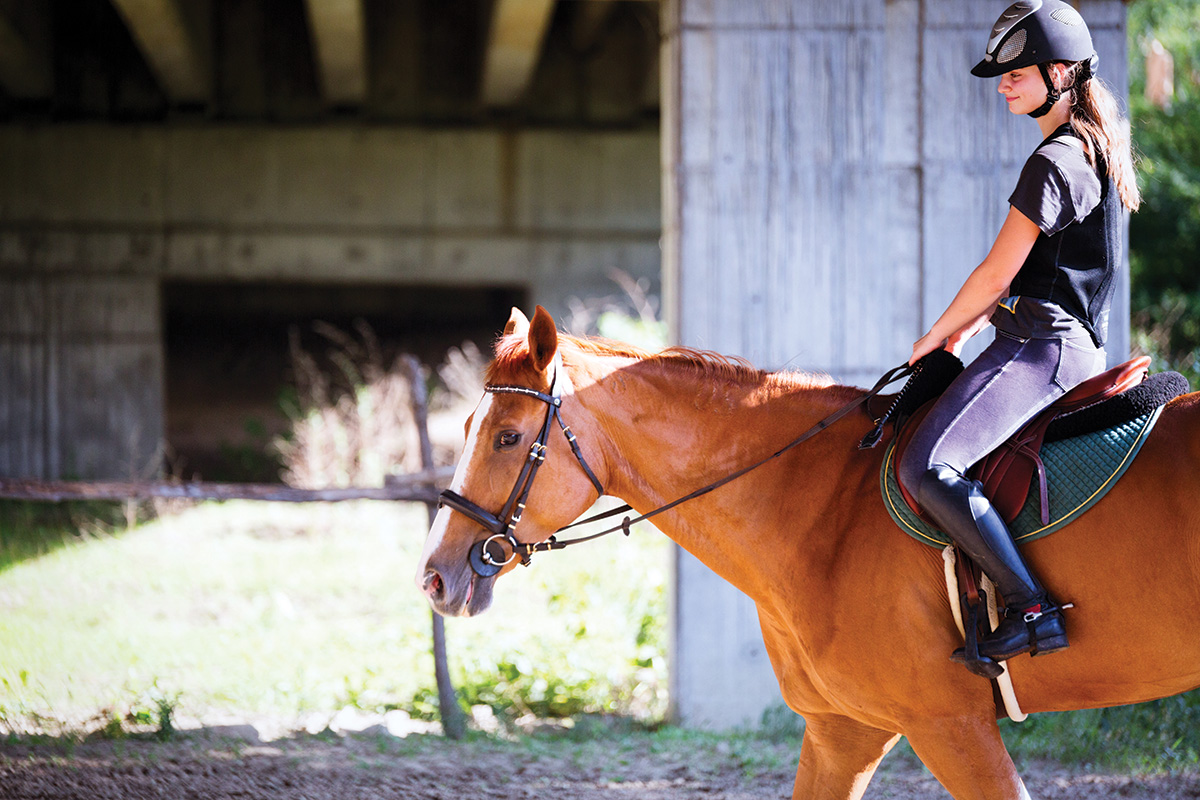
With the popularity of low-starch feeds today, Crandell says it’s not uncommon that a naturally calm horse eating a feed with less than 12 percent starch may be lacking in energy.
She notes that muscle glycogen is a major energy source when the horse is exercising and performing, but ultra-low starch feeds (less than 12 percent starch) may not provide enough glucose to build that muscle glycogen.
“The ultra-low starch feeds are ideal for horses with muscle diseases, such as PSSM [polysaccharide storage myopathy], because these horses have a problem that causes them to build up too much muscle glycogen,” says Crandell. “The ultra-low starch feeds work by not supplying the substrate [glucose] that encourages muscle glycogen deposition, so they can’t build up too much.”
While ideal for horses with glycogen disorders, ultra-low starch feeds may not supply enough NSCs (ultimately, glucose) for every performance horse.
Key Takeaway: Evaluate and Adjust
There’s no “one-size-fits-all” feeding program. Adjustments must be made based on each horse’s workload, stabling/turnout situation, body condition, and temperament.
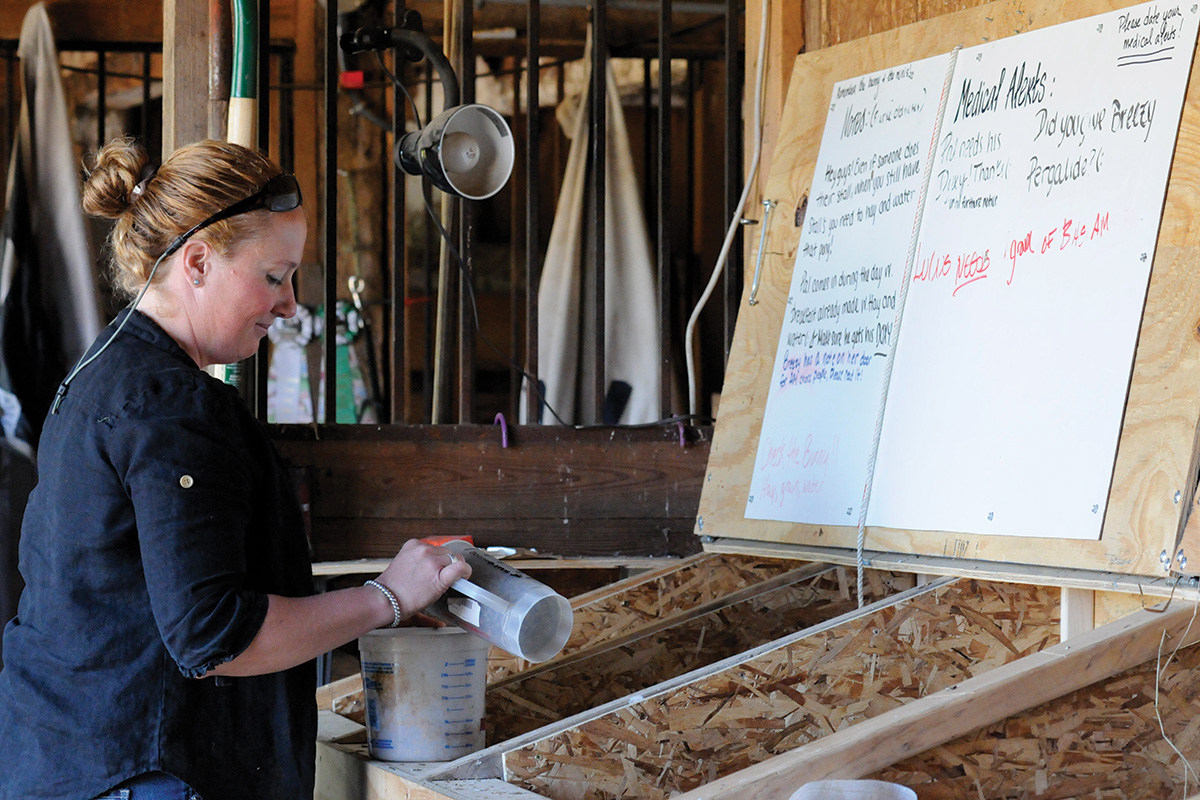
Crandell says finding the right feed for each individual horse is often a matter of trial and error.
A healthy horse that lacks “get up and go” may simply need more starch in his diet, while a healthy horse that always seems to have excess energy may be getting fed more calories than needed.
Most horses today don’t work as hard as horses in the past, but they’re often fed as though they are working all day.
“It is important to match caloric intake to the caloric needs of every individual horse,” says Crandell.
A healthy horse in good weight doing little to no work may not even need grain/concentrate. Hay and a ration balancer will ensure he’s getting adequate protein, vitamins and minerals, and this may be all that is needed.
Take an honest look at your horse’s feed program, exercise routine, and temperament, and adjust accordingly. Ultimately, nutrition can play a role in a horse’s temperament, but as with anything in horse care, the “recipe” must be fit for the individual.
Further Reading
◆ Rules to Feed a Horse By
◆ 8 Horse Feeding Mistakes to Avoid
◆ Horse Feeding Dos and Don’ts


